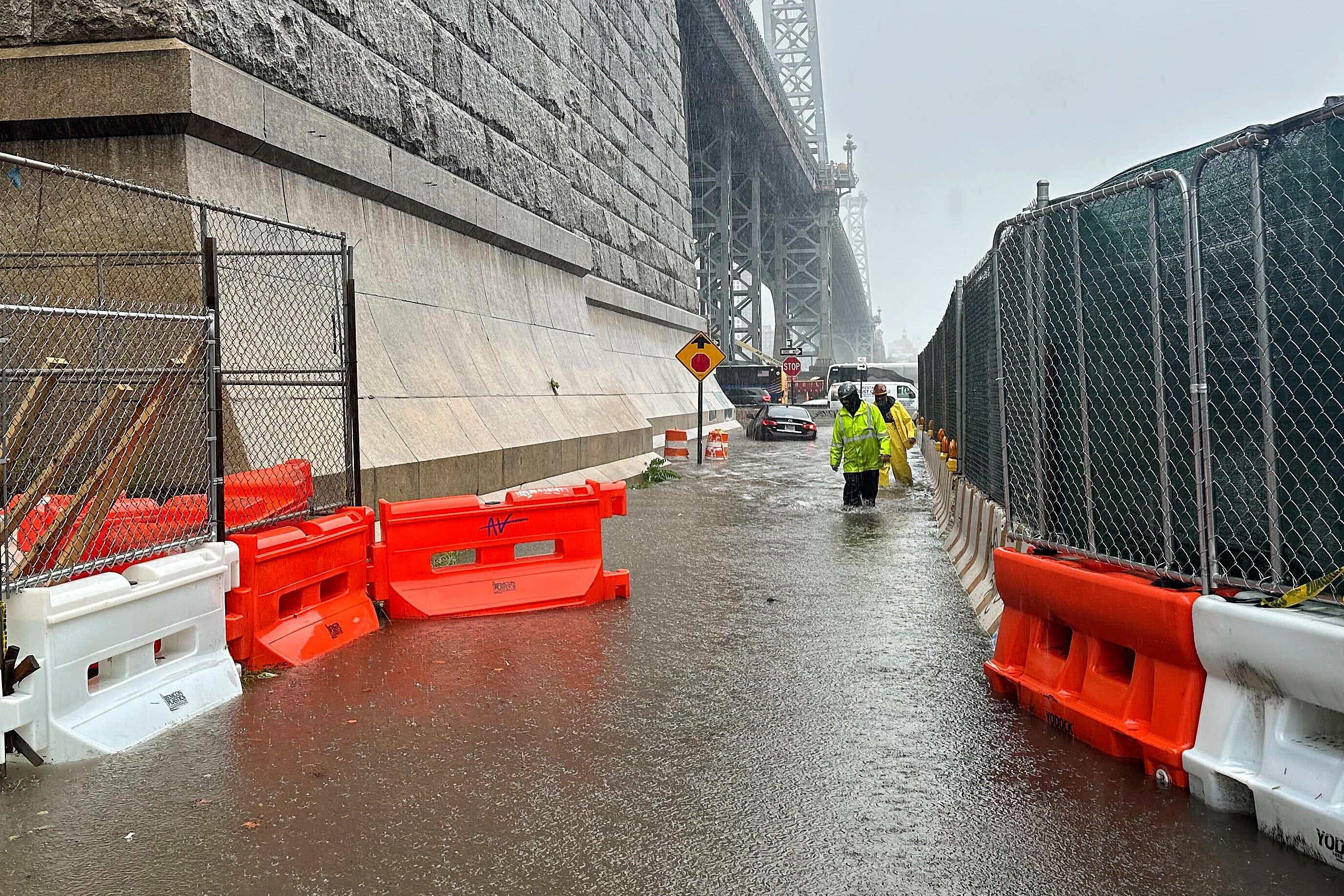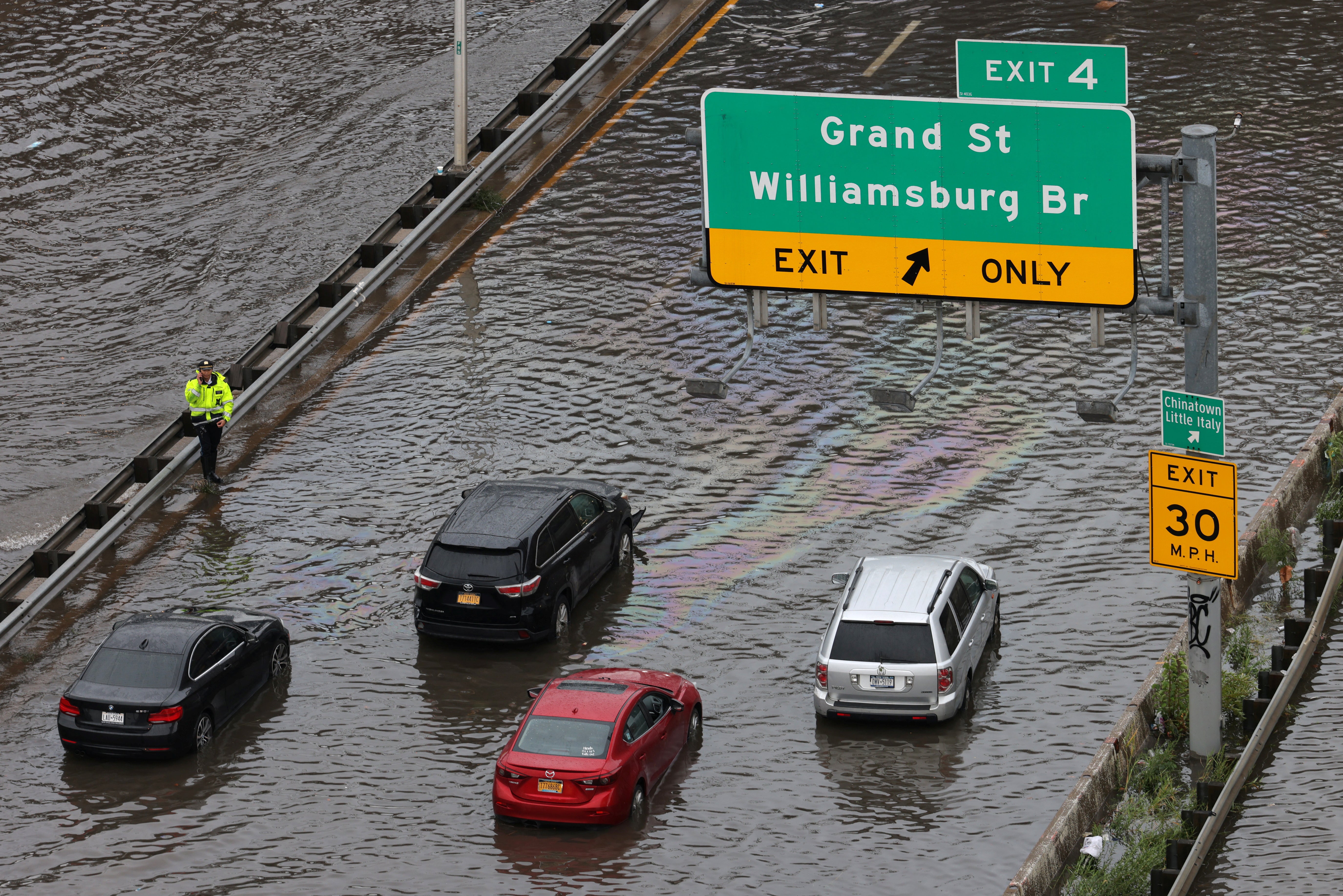New York City flooding blamed on climate change: ‘Plan your escape route’
‘Our climate is changing faster than our infrastructure can respond,’ said Rohit Aggarwala, from New York’s Department of Environmental Protection
The flooding chaos that unfolded across New York on Friday is the result of the climate crisis, a city official warned.
A large storm system lodged over the region on Thursday night leaving the five boroughs and parts of upstate New York, New Jersey and Connecticut under flood watches and warnings.
The rain remained relentless as the Friday morning rush hour commute began. By mid-morning, New York Governor Kathy Hochul declared a state of emergency as water submerged highways, the subway system ground to a halt, a terminal at LaGuardia flooded, and residents waded through streets with water up to their knees.
Mayor Eric Adams urged New Yorkers to stay home or “shelter in place” if they had already gone out to work or school. He warned that the city could see eight inches of rain before the storm passes.
Three to six inches of rain have fallen with several more on the way in the next 24 hours, according to the National Weather Service (NWS). Some forecasters warned the flooding has the potential to be “historic”.
Forecasters said rainfall was coming down at a rate of one to 2.5 inches an hour in some places.
From 8am- 9am, the Brooklyn Navy Yard received 2.58in of rain, said Rohit Aggarwala, Commissioner of New York’s Department of Environmental Protection, said at a Friday press briefing. The city’s 120-year-old sewer system was built to handle 1.75in per hour.
“This is the result of climate change. Our climate is changing faster than our infrastructure can respond,” Mr Aggarwala said as he laid out some of the upgrades being made around the city.
Forecasters warned that Friday’s flooding could be unprecedented even in an era of worsening extreme events.
Friday was preliminarily the wettest September day on record at JFK Airport, according to NWS. Some 6.08inches of rain had fallen since midnight eclipsing the 5.83 inches record from Hurricane Donna in 1960.

“This has the potential of being a historic flash flood for NYC. We are in a climate emergency,” tweeted Eric Holthaus, who runs the Currently weather service.
On a hotter planet, more moisture is held in the atmosphere, meaning that storms have a greater likelihood of bringing intense rainfall.
In the US Northeast, the volume of rain in very heavy events increased by 55 per cent from 1958 to 2016, meteorologist Terran Kirksey, from the nonprofit Climate Signals, wrote in an email. Much of that increase has taken place since 1996 due to the human-driven climate crisis.
The world experienced its hottest summer on record in 2023, which included record-breaking ocean heat. These higher temperatures, driven largely by emissions from burning fossil fuels, has made the global mean sea surface temperature nearly 1 degree hotter than 100 years ago.
More heat in the ocean supercharges storms, causing them to last longer and pack heavier rainfall, scientists say.
The latest report from the UN’s top climate science panel found that the frequency of “1-in-10 year” extreme rainfall events has increased 30 per cent globally.
In addition, climate change is causing sea level rise which compounds the danger of storm surge.

“Storm surge will produce a greater inundation as background sea level is higher systematically over almost all regions of the globe because of global warming,” Dr Tom Knutson, senior scientist with the NOAA Geophysical Fluid Dynamics Laboratory, previously told The Independent.
On Friday, Governor Kathy Hochul declared a state of emergency across New York City, Long Island, and the Hudson Valley. She said that officials were particularly worried about people living in basement properties, during a press briefing.
During 2021 Hurricane Ida, which hit the Northeast with unprecedented flooding in 2021, 43 people were killed including a number who drowned in their homes.
“Plan your escape route. Don’t wait until water is over your knees before you leave. Don’t wait until it’s too late,” Gov. Hochul said.
Join our commenting forum
Join thought-provoking conversations, follow other Independent readers and see their replies
Comments


Bookmark popover
Removed from bookmarks